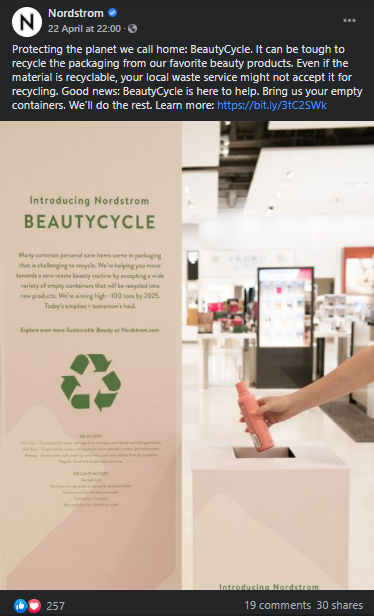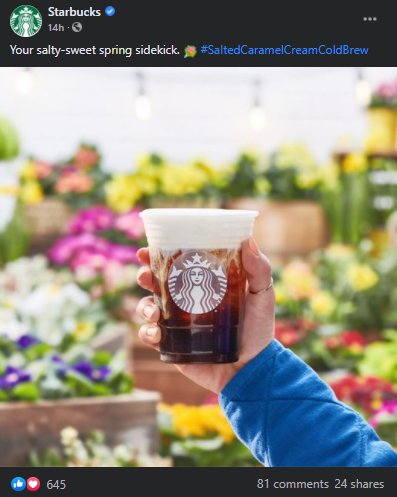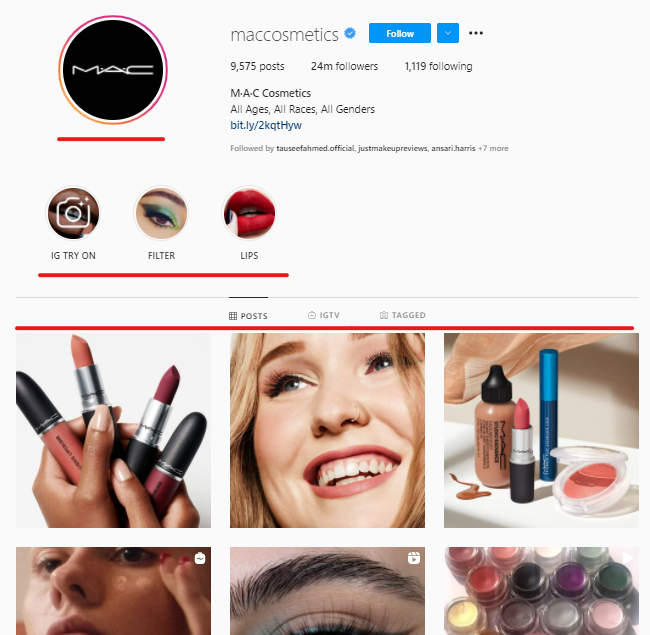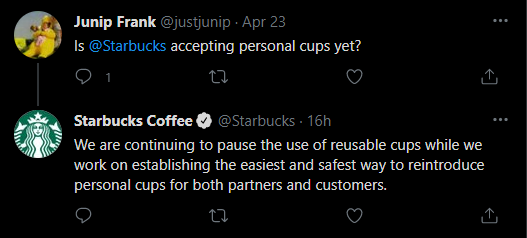How to Create Winning Social Media Strategies for Small Businesses

Up-and-coming businesses can no longer afford to also have a social media marketing strategy; it needs to be their bread and butter.
Whether you’re talking customer acquisition or retargeting old customers who’ve lapsed over time, a social media marketing plan allows you to do it all.
The big question is, where do you even begin with your social media strategy? We’re glad you asked! Here are 14 proven social media advertising strategies for small businesses that you need to take up.
Contents
- Set Social Goals For Your Small Business
- Define and Own Your Brand’s Voice
- Who’s Your Social Audience?
- Looking At Competitors’ Past Content—The Proof is in the Pudding
- Serve Up Some Value Additive Content
- Be a Content Chameleon
- Engage, Engage, Engage
- It’s All in the Metrics—Review Social Analytics
- Get Platform Specific in Your Approach
- Use Social Media As A New Frontier For Customer Service
- Look For Trends
- Find the Best #hashtags
- Double Down on Social Media Optimizations
- Get Social Media Experts on Board
Social Media Marketing Plans—The Key to Long-Term Success?
The Ultimate Social Media Marketing Strategy For Startups and Small Businesses—Wrapping Up
Social Media Marketing Strategies That Work! An Essential Guide For Small And Up-And Coming Businesses
1. Set Social Goals For Your Small Business

Here’s a question: can you spell out the impact your social marketing strategy a) has had, and b) aims to have? If you can’t answer in a heartbeat, we have a problem.
What we’re trying to say is, you need to have social media goals for your small business. And every interaction and success you have needs to be measured against these goals.
Walk yourself through the buyer’s journey for your product or service, and at each step, identify what your target is, what kind of social activity you’ll use to achieve that target, what the KPIs are for that activity, and the impact you want it to have. This sets up a nifty feedback loop that allows you to tweak your content to your heart’s content.
Here are a few examples of social media goals to get you started:
- Increase web traffic
- Increase how many people engage with your posts
- Make people aware of your brand
- Distribute informative content regarding a product/service
- Get more sign ups
2. Define and Own Your Brand’s Voice

Let’s dwell on this campaign from social media titan and clothing behemoth Nordstrom for a bit. Notice how they effortlessly weave in a service they’re offering into a campaign that’s also supposed to help save the planet. Associations like these stay in consumers’ minds, and are very powerful sales tools.
Alongside, the verdict is in—people don’t want to interact with businesses that sound like there’s no one behind them. They want a magical Oz-like character behind the curtains, orchestrating the company; someone who’s a real big personality. They also want this person to be the face of the company, so they’re talking to someone they can trust.
So, what does this mean for your small business’s social media marketing plan? For starters, if you’re the owner and fashion yourself to have even a little bit of charisma, try to put yourself front and center in all the video content you put out. Better yet, get the whole team on board by asking employees if being the public face of the company is something they’re interested in.
You could also go the behind-the-scenes route with your social media presence—this really humanizes your company.
3. Who’s Your Social Audience?

It’s marketing 101, but we’ll scream it from the rooftops anyway: you need to know your audience! And when we say know them, we mean really know them.
So, while you may have a general sense of the fact that 20 somethings who identify as women like your beauty products, you also need to know where they are, how engaged they are, and whether there’s additional consumers out there who augment your core audience. Your social media digital marketing strategy needs to account for all possible variables.
The answer, as always, lies in data. And the good news is that social media platforms give you bucketloads of it. Platforms like Twitter and Facebook already come with robust demographics analysis tools, but it doesn’t even stop there; you can complement these tools with some seriously heavy-hitting third party plugins.
All of this comes together to give you a pretty complete picture of who your audience is comprised of, allowing you to take decisions accordingly. Once you have your core demographic, all you have to do is research the kind of content they’re into, and you’re good to go!
4. Looking At Competitors’ Past Content—The Proof is in the Pudding

GoPro is the undisputed king of daily featured photos content; and it didn’t have to reinvent the wheel. All it did was take customers using their product in daring situations, and it put a new spin on an old format.
It’s not cheating if you make the content your own! Here’s the thing, there’s no such thing as completely novel content—it’s always a mishmash of what’s been done before, made new with your unique twist on it.
So when we say that the map to your success already exists, we mean it. All you need to do is look at what established competitors have been doing for a really long time—what worked, what didn’t, and what you can take and improve upon.
Remember, industries need to keep up with trends, and you want to be ahead of the curve too, not always catching up. That means you need to:
- Take competitors’ content and find a way to make it fresh
- Alongside, you need to innovate, so customers see you as the popular new kid around the block
- You can also mix and match competitors’ content to create new formats altogether
5. Serve Up Some Value Additive Content
Nothing gets your followers to leave en masse like you wasting their time. Here are some social actions that could make your brand a pariah on social media:
- Spamming your followers with promotional messages
- Posting way too much
- Not posting at all
- Coming up with posts that don’t solve any problems that your audience has
The takeaway? That every post you make needs to be worth your audience’s time. We’re not saying you need to be somber and informative either—casual tones work great, but the post still needs to tell potential customers something they want to hear.
Here’s an example of a social media post from social media staple Starbucks:

Notice how the post is beyond chill (pun intended), but it tells you a lot about the product. The featured image is super flattering and you know it’s a mix of salty and sweet that’ll help you beat the heat—it’s a winning combination, and just in a few words (Notice the effective use of the hashtag here too).
Once you strike the balance between the right tone and the right amount of information, every post will be a winner.
6. Be a Content Chameleon

In the age of digital media consumption, the worst thing you could be is unchanging. The type of content you serve to clients needs to be as varied as possible, taking full advantage of all the media and other features different social platforms give you.
See the image above from Mac Cosmetics’ Instagram page? Notice how at the same time, they have new social media posts, Highlights, and Stories for consumers to peruse. It’s an all-of-the-above approach that really seems to show that the brand is doing well.
Do you only post GIFs on your Buzzfeed-esque pop culture page? How about changing it up by posting compilation videos as well? Have an Instagram feed that your customers already love? Spice up engagement levels by leveraging Stories, IGTV, and Highlights. You get the picture.
Here’s the kicker, even conventional wisdom flies out the door if you’re only posting the same type of content. You know how people say that posts with images do better than just plain text? Well, it turns out, if you keep on posting images, eventually, they get stale, and people want out of your page.
The key is to keep on reinventing yourself for your audience, and to keep them guessing.
7. Engage, Engage, Engage

Starbucks didn’t have to reply to this customer’s question about using personal cups during the pandemic; but it did, because it’s super relevant to a lot of people these days, and makes the brand seem like it cares.
At the end of the day, customers just want to feel like you have their back. There’s nothing more frustrating than getting a product or signing up for a service, only to face a glaring problem with it. Actually, wait, there is—it’s experiencing radio silence when you reach out to the company for help.
Most brands are under the false belief that customers should come to them—but here’s a reality check, when you’re running a small business that still doesn’t have a ton of traction, you’re going to have to bite first.
The good news is, it’s not hard; in fact, we’ve broken it down into a neat list:
- Kill two birds with one stone by sharing content from someone in your core audience, and tag them for a mutually beneficial relationship (They’re also very likely to give you a shoutout for this!)
- When customers comment on your posts, reply to as many comments as you can, especially the ones asking for specific information. There’s nothing like making people feel heard.
- Another pro tip is to follow people who are following your competitor, as they’re sure to take notice when a brand takes the time out to give them a follow
8. It’s All in the Metrics—Review Social Analytics

Social media platforms thrive on data; it’s their great money-maker, after all. But data untapped serves no purposes, which is why platforms like Facebook and Instagram give you unprecedented insight into who your followers are, how much engagement they exhibit, and how they find your content.
But metrics can be deceptive; for instance, being bent on the number of likes and followers means nothing if your page isn’t getting the kind of targeted engagement that leads to someone taking a desired business action.
Wait, what does any of that mean? To simplify, if you’re running an up and coming residential repairs business and get a ton of likes on your blog posts, but not one of those leads actually calls you to step in, it’s a major problem.
That’s why it’s super important to identify what metrics are important to you, and then proceed to double down on them.
So, buckle up, because we’re taking a deep dive.
a. Impressions
Impressions is just a metric that tells you how many times a post showed up on people’s social timelines. So while you naturally want impressions to be high, if no one is interacting with your post as they see it, that’s really bad news.
b. Engagement
Engagement is the second piece of the puzzle; your impression to engagement ratio needs to be as close to 1 as possible. This is because engagement tells you how many people actually interacted with your post. This includes likes, shares, and comments, among a host of other actions, based on the platform.
c. Visits
Visits tells you how many people went from a post to your main profile. It’s a surprisingly important metric because it tells you how much interest your post drummed up for the larger brand.
d. Mentions
Mentions refers to when your brand gets a shoutout, or when someone else refers to your brand—either in passing or in the form of a review or a query. It’s a good indication of whether you’re part of the larger industry conversation.
e. Followers
This one’s pretty simple; it’s the number of people who are following you on your social media page, and indicates how fast your popularity is rising. It’s also a great metric for comparisons against direct competitors.
9. Get Platform Specific in Your Approach
We’re not going to beat around the bush; here’s what you need to do to be successful on some core social media platforms:
10. Use Social Media As A New Frontier For Customer Service
We’ve come a long way from the days of snail mail being used to bring up customer complaints. Follow up times were atrocious, and this meant that a lot of people just never reached out
The opposite is true these days. Customers expect near instant replies, and that includes having a responsive Facebook Messenger and Twitter presence.
The best part is that both of these platforms have different levels of automation features in place, so customers don’t have to wait around for the simplest queries to be answered.
But to really get them on board, try to personalize the online customer service experience as much as possible. Hire a team to reply to customers with questions and complaints, and make sure you steer clear of stock answers as you talk to them.
11. Look For Trends
From the #ALSIceBucketChallenge to dabbing, and even the dark places the internet went to with the Tide pod challenge, online pop culture never stays put.
The key here is to take these trends and adopt them in a way that makes sense for your brand. For example, if it’s men’s health week or breast cancer awareness day, it makes sense to highlight employees who have dealt with these issues, and then talk about how your brand is trying to make a difference.
In a similar vein, if there’s a beauty YouTube trend going around, make your own video using your in-house products if your brand sells cosmetics. Remember, your audience is really honed into content that’s not true to your brand, and any missteps can lead to mistrust.
Hashtags are more versatile than you’re giving them credit for! They’re equal parts research opportunity and discoverability tool, making them really important in your social media arsenal.
There really are so many ways to use them:
- Hop aboard trends and ask people to tag your brand in the official hashtag if it’s related to your core business.
- Host contests and ask all your followers to use the same hashtags, generating a ton of buzz around the event.
- Figure out what hashtags are doing super well for your competitors, and start using them to divert traffic to your website.
And that’s just the tip of the iceberg! There are all kinds of tools out there that allow you to find the top ranking hashtag in a certain niche, as well as how hard it is to rank for them. So don’t hesitate, and jump on board the #bandwagon.
13. Double Down on Social Media Optimizations
While this can get a little technical—and is often best left to the social media marketing experts—it’s important to know that even social media content can’t escape our SEO overlords.
But wait, what’s so hard about throwing in a couple of hashtags, right? Well, here are a few questions in rebuttal:
- How many hashtags for each platform before they’re counted as spam?
- What size should the ideal Facebook featured image be?
- How do you maximize your returns from your YouTube titles and descriptions?
What we’re trying to say is, there’s a ton of platforms out there, and that means the number of variables when it comes to social media optimizations really is staggering.
But if you’re still going solo, here are a few time-honored social media tips:
- Only use hashtags that are industry specific and medium to high volume.
- Stick to three hashtags for Twitter, Facebook, and YouTube, as many as twenty on Instagram.
- Where there’s video content, make sure there’s also meta data to make it readable for search engines.
14. Get Social Media Experts on Board
To build upon the previous point, it really is in your best interests to hire social media marketing experts in the long-term. They can help you develop a long-term strategy that takes an omnichannel approach, while also optimizing for each platform keeping best practices in mind.
It’s a win-win scenario, because freeing up resources that would be otherwise spent on social media management will open you up to generating revenues using core business activities.
Social Media Marketing Plans—The Key to Long-Term Success?
Only a few businesses experience success as a flash in the pan; the rest of us have to put the work in! And when it comes to social media marketing plans, that means taking an all-of-the-above approach to your strategy.
These plans need to:
- Go in depth when it comes to social media platform specificities, such as when to post, how often to post, and more.
- Have an involved understanding of the target market, and whether there are other markets that can be broken into.
- Be aware of the resources available to execute said plan.
- Populate the social media business plan with all kinds of nuances that come with platforms and certain business niches coming together.
It’s a tall order, but with the right mix of expertise and some quick thinking, it’s more than achievable.
The Ultimate Social Media Marketing Strategy For Startups and Small Businesses—Wrapping Up
If your small business is feeling the heat and can’t afford to go undiscovered for a few more years, it’s time to take your social media marketing efforts up a notch!
Knowing how to promote your business on social media will take you a long way, but you really do stand to benefit by aligning yourself with one of the best digital marketing agencies in the U.S. We can completely manage every aspect of your social media presence, so you don’t have to worry about a thing!
For more information about our services, call 855-444-4777.













